Cats may not speak human languages, but they definitely have their own ways of showing affection. Understanding how our feline friends express love helps build stronger bonds between pets and their humans.
Whether you’ve just adopted a kitten or have been a cat parent for years, learning to communicate in ‘cat language’ can transform your relationship with your furry companion.
1. Blink Slowly at Them
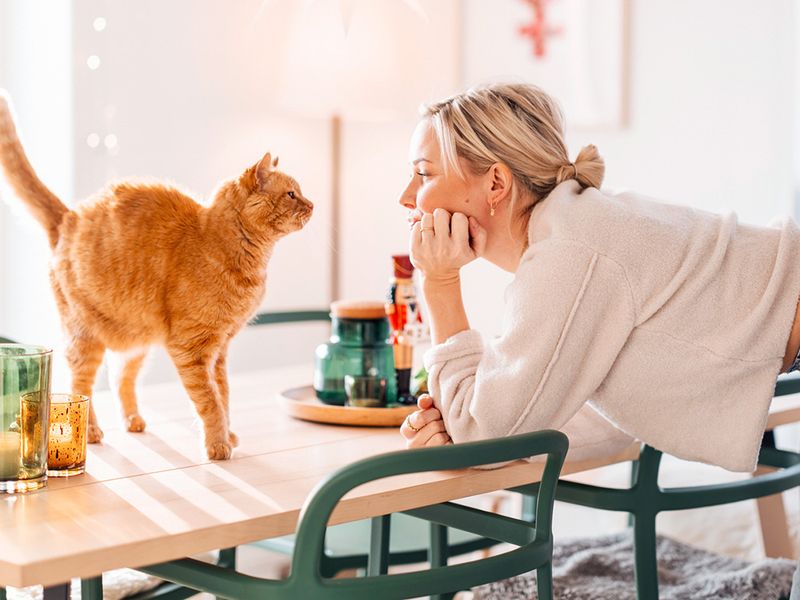
Cat behaviorists call this the ‘cat kiss’! When your feline friend gives you slow, deliberate blinks, they’re actually expressing trust and affection. This powerful non-verbal communication says, “I feel safe enough around you to close my eyes.”
Try initiating this loving gesture yourself by making eye contact with your cat, then slowly closing and opening your eyes. Many cats will respond in kind, creating a sweet moment of connection between you two.
For nervous or new cats, this technique can help establish trust before attempting physical contact. It’s a respectful way to say “I love you” from a comfortable distance.
2. Play with Their Favorite Toys
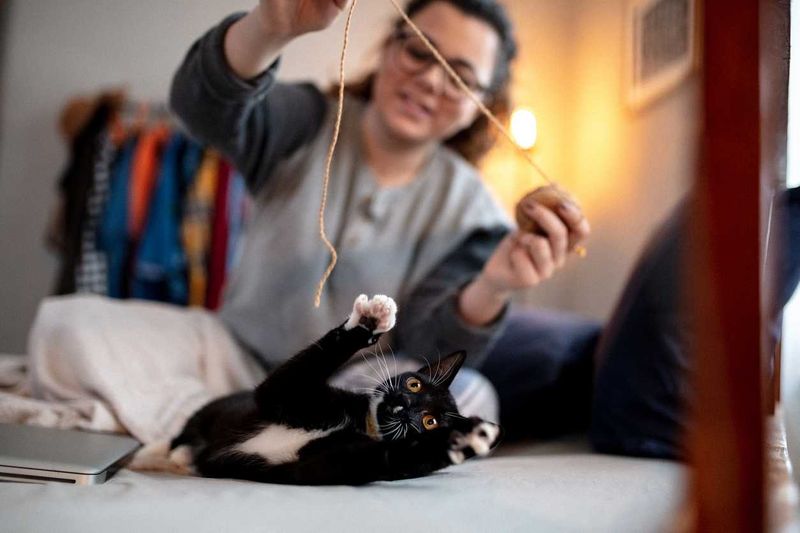
Playtime isn’t just fun—it’s a love language! Cats are natural hunters, and when you engage with their predatory instincts through interactive play, you’re speaking directly to their wild hearts. The shared activity creates a special bond between you and your feline companion.
Dedicate at least 15 minutes daily to waving wand toys, rolling balls, or tossing catnip mice. Notice which toys make your cat’s eyes dilate with excitement. Consistent play sessions not only say “I love you” but also reduce behavior problems by channeling energy positively.
Your cat will associate you with fun and satisfaction—the ultimate compliment in the feline world!
3. Offer High-Value Treats

Food speaks volumes in the feline world! Offering special treats creates positive associations with your presence. Unlike dogs, cats won’t work for just any snack—they appreciate quality over quantity.
Small pieces of cooked chicken, bits of tuna, or specialized cat treats given occasionally can strengthen your bond. Watch how your cat’s ears perk forward and their tail rises with excitement when you bring out their favorite delicacy.
Some cats even develop specific meows just for treat time! Remember to keep treat portions tiny, as a cat’s stomach is only about the size of a ping-pong ball. This thoughtful approach to treats shows you care about both their happiness and health.
4. Talk to Them Softly
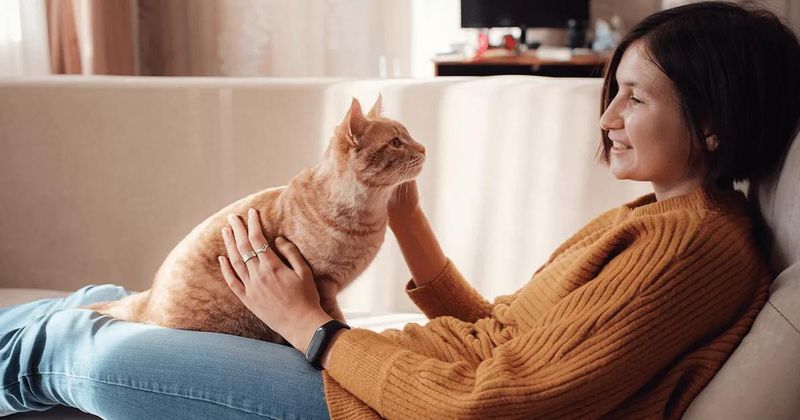
Your voice carries emotional weight with your feline friend. Cats respond positively to high-pitched, gentle tones that sound nothing like threats or aggression. Many cat parents develop a special “cat voice” without even realizing it!
Try speaking softly while maintaining eye contact, using their name frequently. Research shows cats recognize their names and the unique voice patterns of their favorite humans. This verbal connection helps them feel acknowledged and valued.
Some cats will “talk back” with chirps or trills when you speak to them—their way of continuing the conversation! This vocal exchange creates a beautiful communication loop that strengthens your bond daily.
5. Respect Their Boundaries
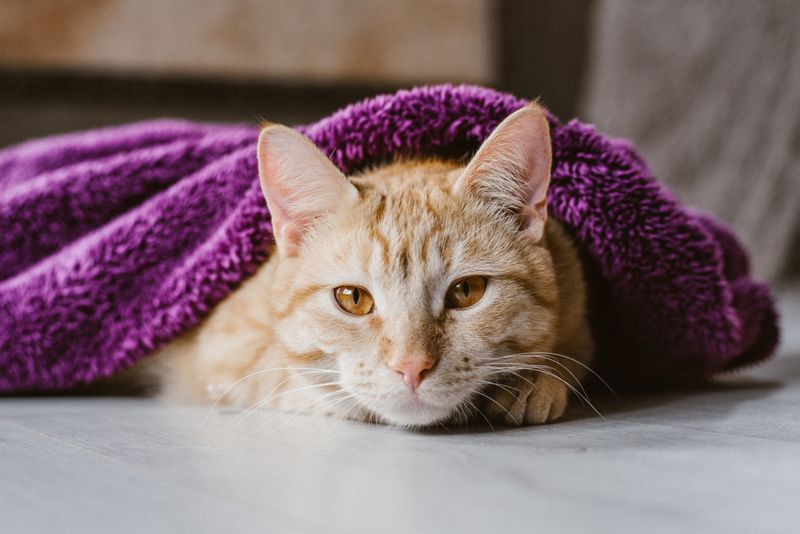
Nothing says “I love you” to a cat like honoring their personal space. Unlike many dogs, cats appreciate humans who understand consent and don’t force affection. When you allow your cat to approach you on their terms, you’re showing profound respect for their autonomous nature.
Watch for subtle body language cues—a flicking tail, flattened ears, or dilated pupils often signal overstimulation. Immediately backing off when you notice these signs builds tremendous trust. Many cats who seem “antisocial” simply haven’t had their boundaries respected.
Once they realize you understand their comfort zones, they’ll often become more affectionate voluntarily, creating a relationship built on mutual respect rather than dominance.
6. Provide a Safe, Cozy Space
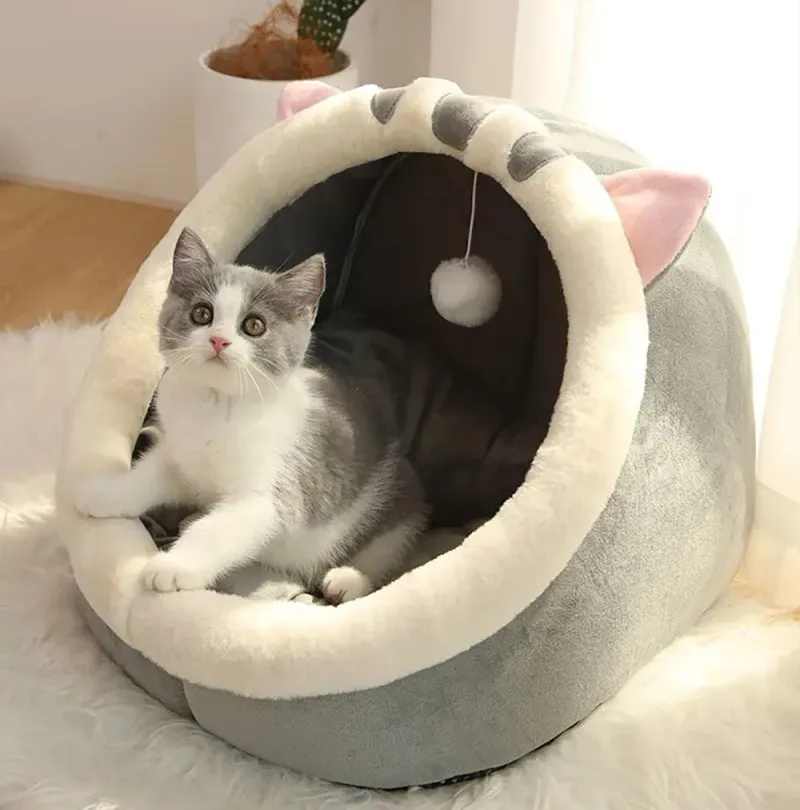
Cats treasure security above almost everything else. Creating dedicated safe zones throughout your home speaks volumes in cat language. A warm bed tucked in a quiet corner, a cardboard box lined with a soft blanket, or a dedicated cat tree near a sunny window—these sanctuaries say “I protect you.”
The perfect cat haven should be elevated, partially enclosed, and located somewhere with minimal foot traffic. Many cats rotate between different safe spaces depending on their mood or the household activity level.
When your cat is startled, notice which spot they run to first—that’s their primary security zone. Keeping this area consistently available and undisturbed demonstrates your commitment to their emotional wellbeing.
7. Groom Them Gently
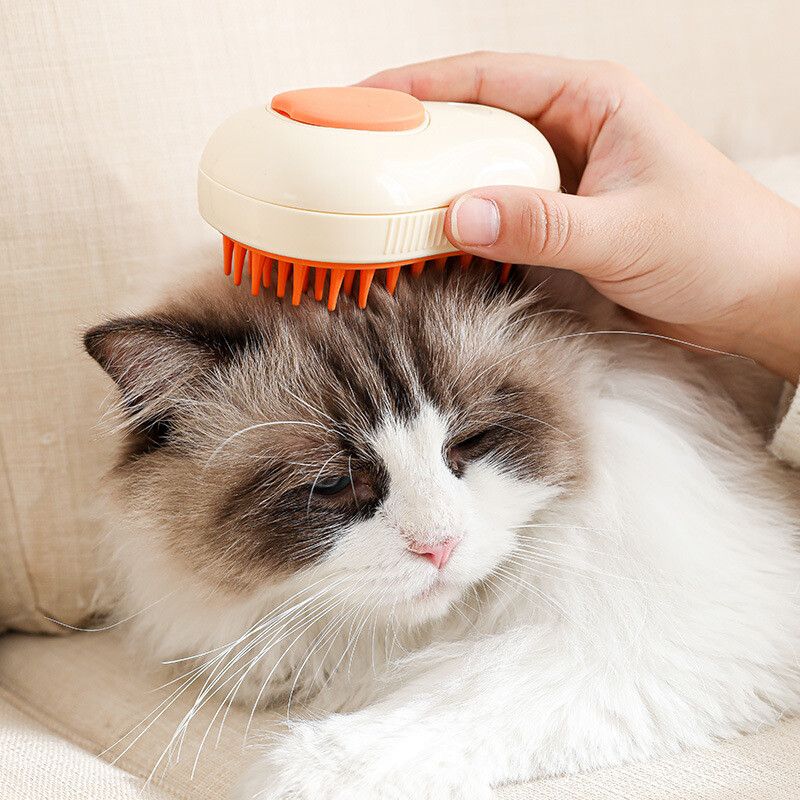
Mutual grooming represents one of the strongest expressions of feline affection. When cats groom each other in colonies, they’re strengthening social bonds and showing care. By brushing your cat, you’re mimicking this natural bonding behavior in a way they instinctively understand.
Start with short, gentle brushing sessions on their cheeks and chin. Gradually work toward their back and sides as they show comfort. Pay attention to their preferred pressure and stop before they show signs of overstimulation.
Many cats who initially resist grooming come to love it when introduced properly. This shared activity reduces stress hormones for both of you while distributing skin oils that keep their coat healthy—a practical way to say “I’m looking out for you.”
8. Keep Their Environment Enriching
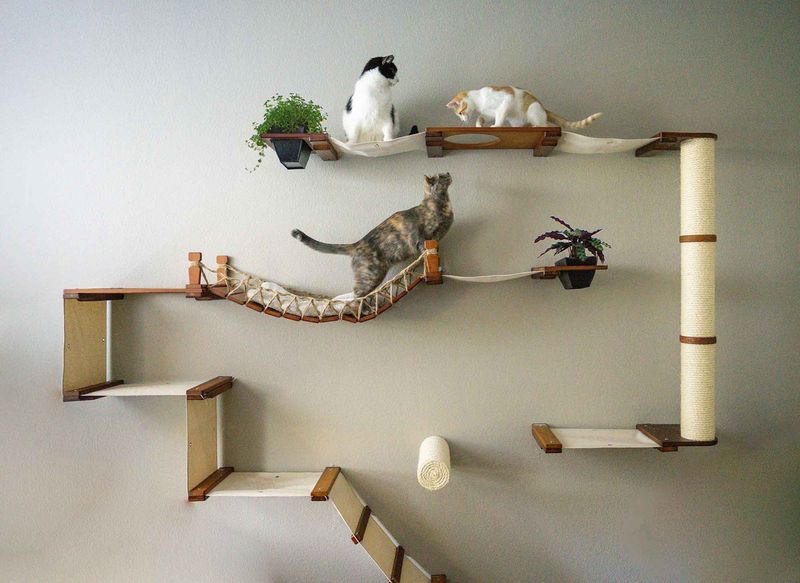
Cats thrive on mental stimulation! Creating an engaging environment filled with climbing opportunities, hiding spots, and observation perches shows thoughtful care for their natural instincts. Rotating toys weekly keeps their curious minds active and prevents boredom.
Consider adding puzzle feeders that make your cat “hunt” for treats, or setting up a bird feeder outside a window for visual entertainment. Even simple cardboard boxes arranged as tunnels can create an exciting playground.
Environmental enrichment prevents destructive behaviors while supporting your cat’s psychological wellbeing. When you invest time in creating stimulating spaces, you’re acknowledging their intelligence and need for mental exercise—a sophisticated expression of love they definitely notice.
9. Let Them Scent-Mark You

Ever noticed your cat rubbing their face against your legs or headbutting your hand? They’re actually claiming you as their territory! Cats have scent glands on their cheeks, chin, and forehead that release pheromones when they rub against objects—or beloved humans.
When your cat marks you, they’re essentially saying, “You belong to me.” This is the ultimate compliment in feline language! Allow this natural behavior without interrupting, even if you’re busy.
Some cats become more enthusiastic about scent-marking during times of change, like when new furniture arrives or after you return from a trip. By accepting their marking, you reassure them that your bond remains strong despite environmental changes.
10. Follow Their Routine
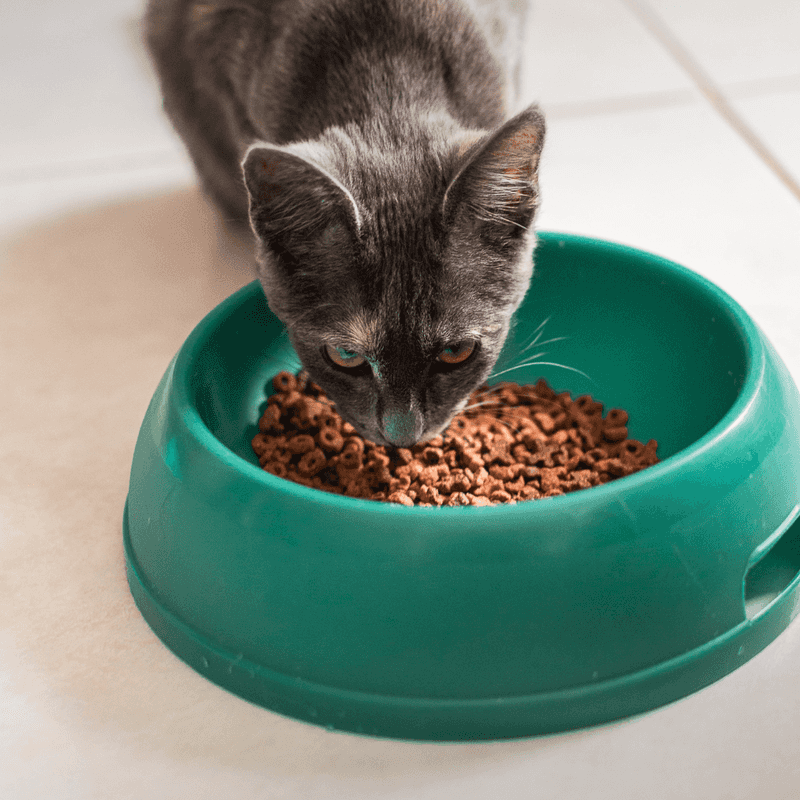
Cats are creatures of habit who find comfort in predictability. Maintaining consistent feeding times, play sessions, and even cleaning routines helps your cat feel secure and respected. This reliability speaks volumes in feline language!
Notice your cat’s natural daily rhythm—when they prefer to play, nap, or seek attention. Aligning your interactions with their natural schedule shows remarkable sensitivity to their needs. Even small consistencies matter enormously.
Using the same words before mealtime or maintaining a bedtime ritual signals to your cat that their world is stable and that you understand what matters to them. This thoughtful synchronization with their internal clock creates deep trust that forms the foundation of lasting love.
11. Spend Quiet Time Together
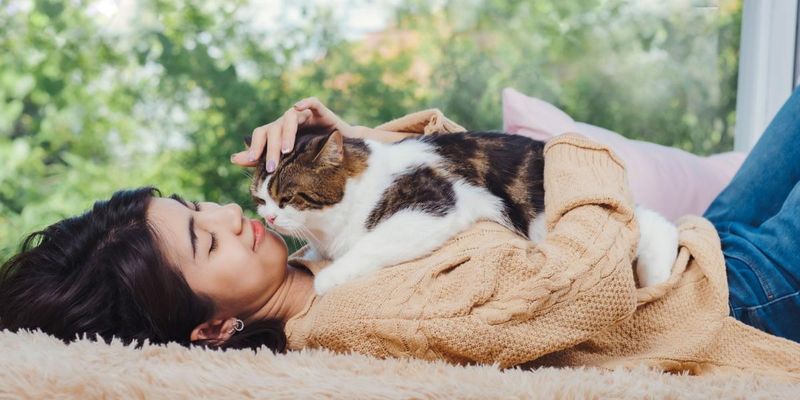
Not all bonding requires activity! Simply being present in the same space speaks volumes to cats. When you sit quietly reading while your cat naps nearby, you’re participating in a profound form of companionship that cats naturally understand from their colony experiences.
This peaceful coexistence—what behaviorists call “parallel play”—builds trust through non-demanding togetherness. Many cats prefer this subtle connection to more direct interaction. Try designating 20 minutes daily for shared quiet time.
Put away your phone, turn off the TV, and just exist alongside your cat. This mindful presence often leads to spontaneous moments of connection as your cat feels the freedom to approach without pressure.
12. Use Pheromone Sprays When Needed
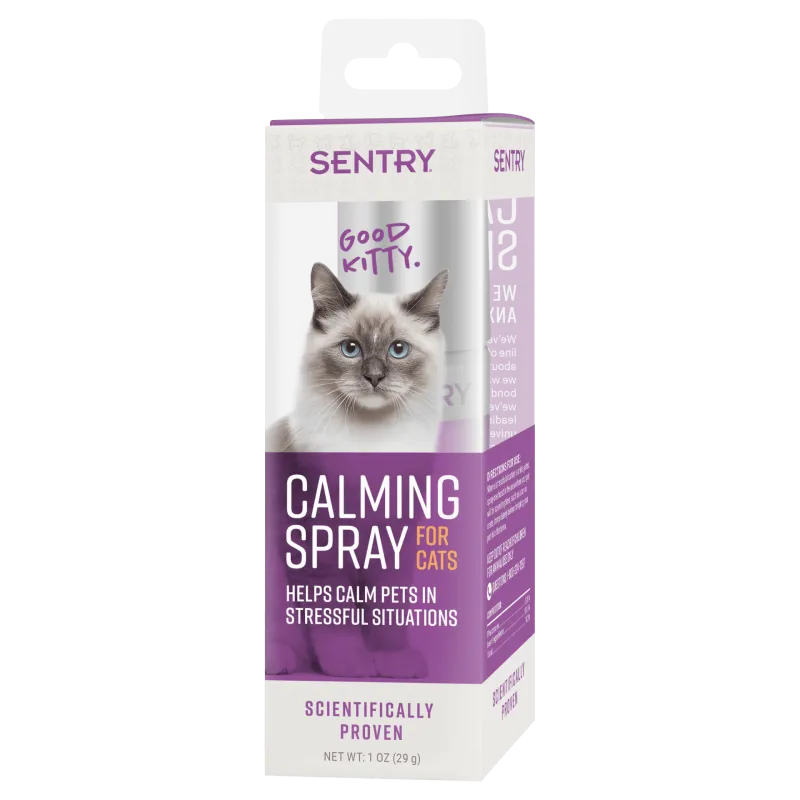
Synthetic feline facial pheromones work wonders for anxious cats! These products mimic the natural calming chemicals cats release when they feel secure in their territory. Using these sprays during stressful times shows remarkable empathy for your cat’s emotional needs.
Consider applying pheromone products before potentially upsetting events like moving furniture, having guests over, or introducing new pets. The familiar scent signals safety when other environmental cues might suggest danger.
Many veterinarians recommend pheromone diffusers for multi-cat households to reduce tension. By proactively addressing your cat’s stress, you’re demonstrating sophisticated emotional support that translates clearly to “I care about how you feel”—a powerful expression of love in any language.
13. Give Gentle Head or Chin Rubs
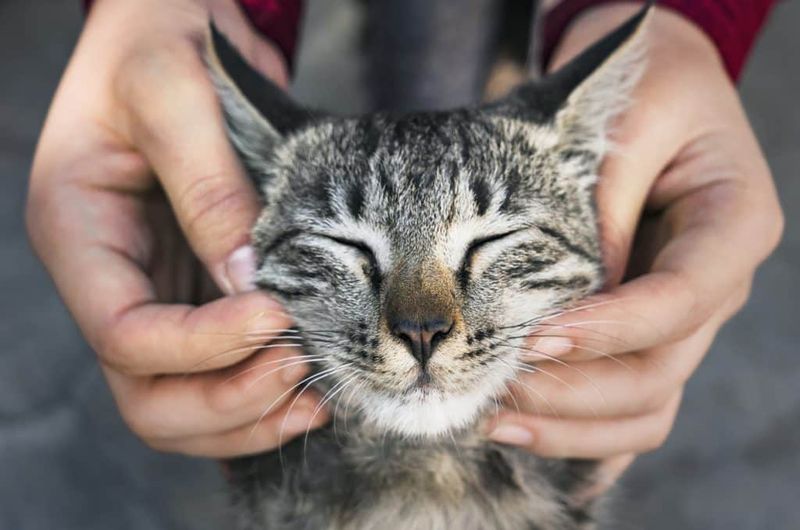
The secret to petting cats lies in understanding their preference zones! Most cats adore gentle scratches around their cheeks, under the chin, and at the base of their ears. These areas contain scent glands that, when stimulated, release feel-good hormones.
Always approach from where they can see you, offering your finger or knuckle at their nose level first. Let them initiate contact before moving to their preferred spots. Watch for the subtle signs of enjoyment: eyes half-closed, purring, or leaning into your touch.
Equally important is recognizing when they’ve had enough—a twitching tail or flattened ears signal it’s time to stop. This respectful approach to physical affection builds tremendous trust.
14. Play Calming Music
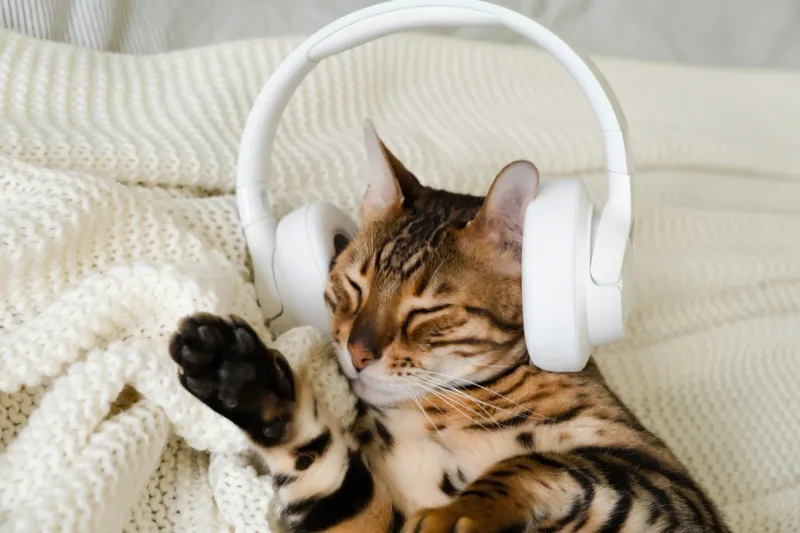
Cats have extraordinarily sensitive hearing that picks up frequencies humans can’t detect. Music specifically composed for feline ears—with tempos matching purr rhythms and higher frequencies—can create a profoundly soothing environment for your pet.
Research shows that cats respond positively to classical compositions and specially designed “cat music” that incorporates purring sounds and bird chirps. Many anxious cats show reduced stress behaviors when these harmonious sounds fill their environment.
Consider creating a consistent auditory backdrop during potentially stressful times like thunderstorms or when you’re away. This thoughtful attention to their sensory experience demonstrates sophisticated care that goes beyond basic needs—a truly advanced way to express love to your feline friend.
15. Reduce Stress During Travel or Vet Visits
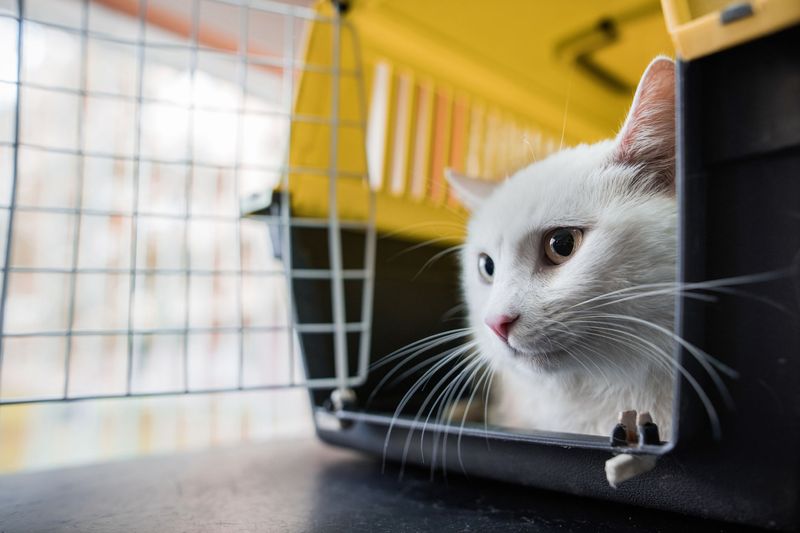
Nothing says “I love you” quite like making scary experiences more bearable. Preparing your cat for stressful situations demonstrates profound empathy for their emotional wellbeing. Start by making their carrier a positive space—leave it open with treats and toys inside during normal days.
Before vet visits, spray the carrier with feline pheromones and cover it with a light blanket during transit to reduce visual stimulation. Remaining calm yourself communicates safety to your sensitive companion.
Advocating for your cat at the vet’s office—requesting gentle handling or explaining their specific fears—shows you’re their dedicated protector. This fierce guardianship during vulnerable moments builds unshakable trust that forms the foundation of deep feline-human bonds.
16. Offer Your Scent When You’re Away
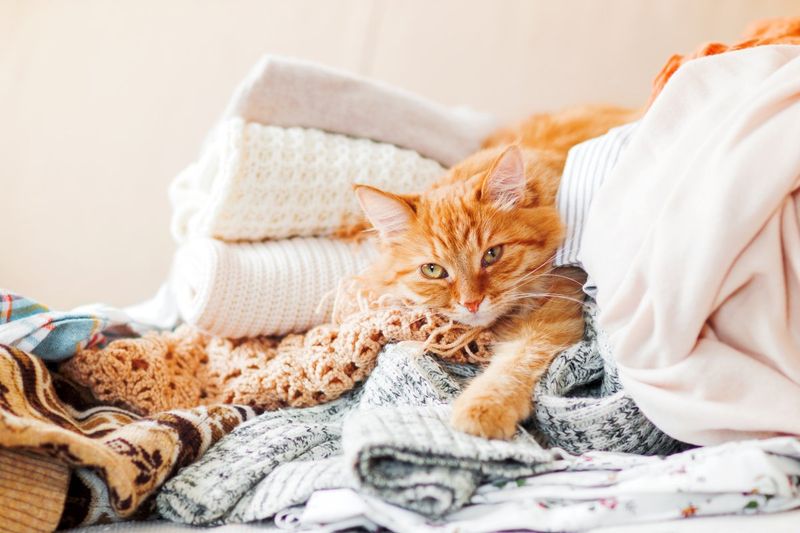
Your familiar smell provides tremendous comfort to your cat! When you must be away, leaving an unwashed t-shirt or pillowcase where your cat sleeps can significantly reduce separation anxiety. Your scent reminds them of your presence even when you’re physically absent.
This simple gesture speaks directly to your cat’s powerful olfactory system—the primary way they identify family members. Many cats will sleep on these scented items or carry them around the house while their humans are gone.
For longer absences, consider rotating several scented items with your cat sitter. This thoughtful approach to your cat’s emotional needs during separation shows remarkable understanding of their attachment process and provides genuine comfort during potentially stressful times.
17. Stay On Top of Vet Care
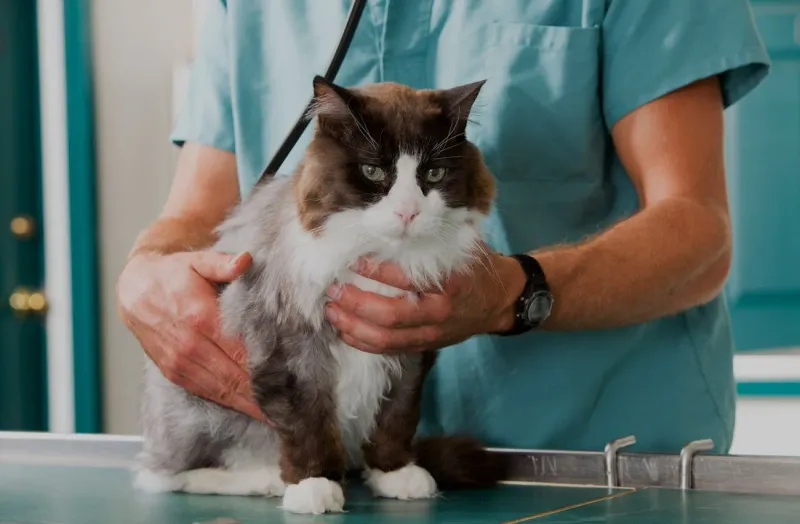
Preventative healthcare speaks volumes about your commitment to your cat’s wellbeing. Regular veterinary check-ups, staying current on vaccinations, and addressing small health concerns before they become serious problems demonstrates profound responsibility.
Many cats hide illness until it’s advanced—an evolutionary strategy from their wild ancestors. Learning to recognize subtle signs like slight changes in water consumption, litter box habits, or activity levels shows remarkable attentiveness.
Maintaining dental health through regular brushing or dental treats prevents painful conditions later in life. This consistent, proactive approach to healthcare—even when it’s inconvenient or expensive—is perhaps the most meaningful way to say “I’m committed to you for your entire life” in a language your cat truly understands.

Comments
Loading…